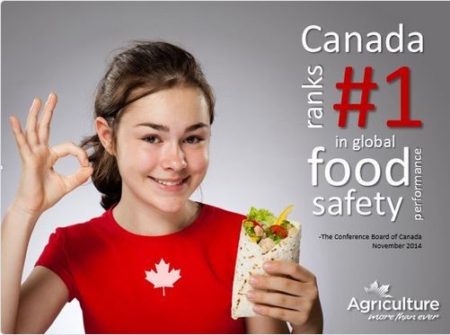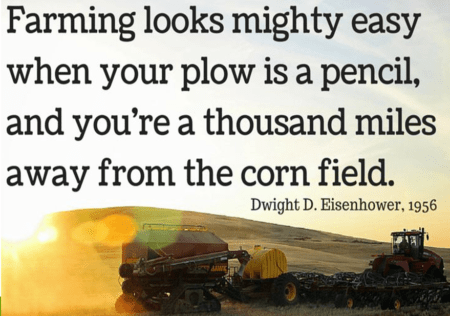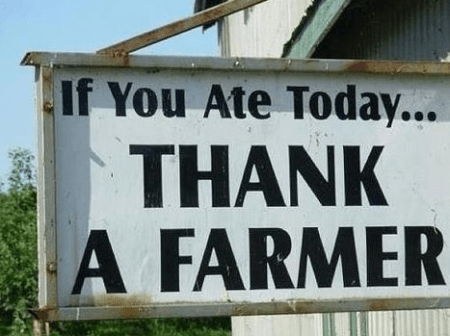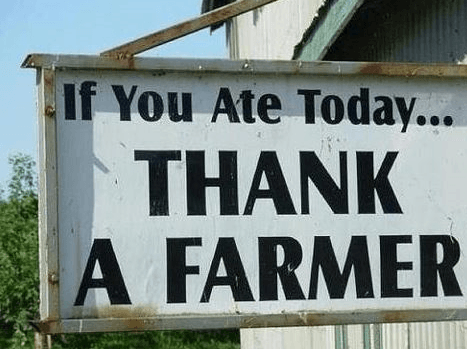By Robert Wager, Vancouver Island University
I’ve had the great pleasure of being a faculty member of the Biology Department of Vancouver Island University for the past 23 years. My area of research is agricultural biotechnology with an emphasis on public outreach. The world has seen a great change in food production and Canadian agriculture has been at the forefront.
 Walking into any Canadian grocery store, I find the food choices amazing. Typically, I can choose from over 50,000 options. It was not always this way. As a child, fifty years ago, I remember there were far fewer choices and my families’ food budget consumed most of our so-called “disposable income”.
Walking into any Canadian grocery store, I find the food choices amazing. Typically, I can choose from over 50,000 options. It was not always this way. As a child, fifty years ago, I remember there were far fewer choices and my families’ food budget consumed most of our so-called “disposable income”.
Today the average Canadian family spends less than 10% of their income on food. We have one of the safest and cheapest food supplies in the world.
How did we get here?
The answer is science-based agriculture policies that encourage modern agricultural research and development. Advances in seed technology and machinery coupled with novel pest control and fertilizer options allow farmers to produce more food more sustainably.
[su_carousel source=”media: 3593,3594″ limit=”4″ link=”custom” target=”blank” width=”500″ height=”320″ items=”1″ scroll=”2″ title=”no” mousewheel=”no” speed=”5300″]
In 1995, Canadian and US farmers began planting genetically engineered (GE) crops. Europe chose not to adopt this modern breeding technology. My research has allowed me to talk with farmers from across this land and around the world. I understand why farmers choose GE crop technology. Today over 90% of corn, soy, cotton, sugar beets and canola planted in North America are GE varieties.
GE crop technology has been adopted faster than any technology in the history of agriculture. Both developed and developing world farmers benefit from this technology. Today over 50% of all GE crop acres are planted in the developing world with approximately 17 million resource-poor farmers grow these crops.
Few in the public understand the tremendous environmental benefits from growing GE crops. A German study found a 37 percent drop in chemical pesticide applications at the same time as a 22 percent increase in yields. The newest breeding methods promise to accelerate the development of disease resistant and drought tolerant crops to help farmers. The public will see more nutritious foods with improved flavour. The future looks bright for Canadian agriculture.
Today less than 2 percent of the population produces food for the rest of us. Farmers understand the benefits and sustainable nature of modern agriculture. Yet farming is under attack. The internet has opened up new challenges for farmers. Critics of modern agriculture are loud and endlessly fill the web with fear generating misinformation (fake news).
[su_carousel source=”media: 3595,3596″ limit=”4″ link=”custom” target=”blank” width=”420″ height=”320″ responsive=”no” items=”1″ scroll=”2″ title=”no” mousewheel=”no” speed=”5400″]
I spend a great deal of time explaining the real science to the public to help alleviate the fear generated by misinformation about GE crops and derived foods. Fear-based marketing is widespread in the food industry. One does not have to look hard to see it.
When enough noise is made by these groups, policymakers start to make decisions based on false information. When public policy is influenced by false information we get bad public policies. But there is good news. The public is beginning to ignore the fear stories. Instead, the public is looking for quality information on how their food is grown.
 You would not go to your auto mechanic to get medical advice. When it comes to food, why would you listen to activists and marketers over farmers? If you want to know about your food, go ask a farmer or farming organization. Farmers are happy to explain what they do and why they to do it. All you have to do is ask. They are the real food experts.
You would not go to your auto mechanic to get medical advice. When it comes to food, why would you listen to activists and marketers over farmers? If you want to know about your food, go ask a farmer or farming organization. Farmers are happy to explain what they do and why they to do it. All you have to do is ask. They are the real food experts.
Canadian agriculture needs a social license to continue our success of producing more food on less land, more sustainably. This social license will come from the public, gaining a better understanding of the realities of farming in Canada. Every time I speak with farmers I learn more about our food production system. Please visit a farm. Talk with a farmer in your area and learn how things really work on the farm. It is nowhere close to the picture activists and marketers paint.
 Canadian agriculture contributes over $60 billion to the economy. We are proud to be one of the main food exporting countries. The global population will continue to rise in the coming decades. By 2050 the world will need to produce 70 percent more food for 9-10 billion people. We will need the best of every type of agriculture to accomplish this goal.
Canadian agriculture contributes over $60 billion to the economy. We are proud to be one of the main food exporting countries. The global population will continue to rise in the coming decades. By 2050 the world will need to produce 70 percent more food for 9-10 billion people. We will need the best of every type of agriculture to accomplish this goal.
February 13th was Agriculture Day in Canada. There is so much to be proud of. Let’s all continue to celebrate Canadian agriculture.
Thanks to Robert Wager for sharing his post with SAIFood!
If you would like to learn more about Robert check out the following links:
Click to e-mail Robert
[su_button url=”https://twitter.com/RobertWager1″ target=”blank” style=”glass” background=”#027aef” size=”5″ radius=”round” icon=”icon: twitter” icon_color=”#ffffff” text_shadow=”0px 0px 0px #000000″]Twitter @RobertWager1[/su_button]
[su_button url=”http://robertwager.com/” target=”blank” style=”glass” background=”#2068a7″ size=”5″ radius=”round” icon=”icon: cube” icon_color=”#ffffff” text_shadow=”0px 0px 0px #000000″]Robert’s webpage[/su_button]


